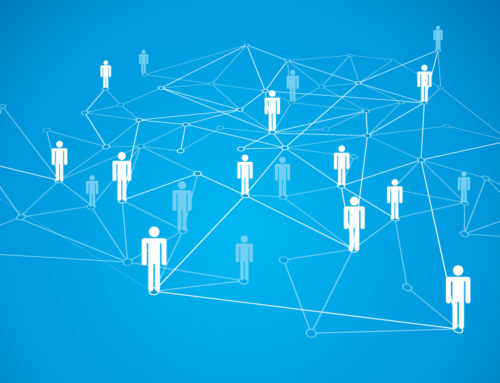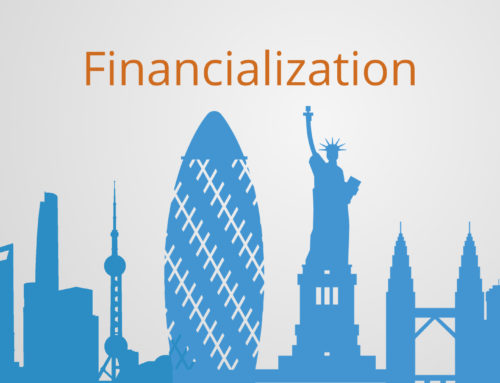Natural Capital Accounting
Since a number of decades now the unsustainable nature of our industrial economic infrastructure has been made acutely evident. It is becoming increasingly clear that the linear model to industrial age systems of organization creates many negative externalities that render them unsustainable. Value intrinsic to society and ecosystem is not accounted for, resulting in negative externalities which accumulate to make the system unsustainable as it develops. A central part of the challenge to sustainable economic development is really in building platforms that can quantify and account for these various forms of value and then build them back into the system, thus changing the incentives that actors are under and working to reduce natural resource consumption and reduce externalities.
Two factors are currently driving the emergence of natural capital accounting, one is quite simply that we are bumping up against the limits of the natural environment, the finite nature of natural resources is becoming increasingly clear. Those limitations are being felt for example in commodity prices, whereas during most of the nineteenth and twentieth centuries, commodity prices had a tendency of declining, the recent development of massively increased demand have caused the reverse, and prices have become much more volatile, the volatility of food prices, for example, increased to 22.4 percent in 2000-2012 compared to 7.7 percent in the previous decade according to the UNEP. With ecosystems degradation we are beginning to appreciate the value of ecosystems services, unfortunately, it is happening the hard way. In the industrial revolution we had scarcity of people and capital and abundance of natural capital. Today we have an abundance of people and goods but scarcity of natural capital. So it is now not industry and people that need to be economized but natural capital that we need to be using more efficiently.
But the other side of this demand-supply equation is the consumer whose values have changed somewhat. Data shows quite clearly that above around ten thousand or so dollars per capita GDP life satisfaction doesn’t really improve much with additional consumption. At a certain level, material throughput becomes essentially decoupled from well-being and moves on to other things, what we might call quality of life that is a product of a number of different value sources. There is certainly a strong relationship between consumption and well-being at a lower end of income but at the upper level of the income bracket it pretty much flattens out and in, for example, the USA people are not really any happier than the person in New Zealand, Ireland or Portugal with lower material consumption patterns. We have been kind of slow to recognize the profound implications of this.
“There’s a lot of interesting psychological research recently about the psychology of happiness the science of happiness, what actually does contribute to people’s sense of well-being and what they’re finding very clearly is that material consumption only contributes up to a certain fairly low threshold and beyond that it is other things, it’s your interactions with your friends and family, it’s your interactions with nature that contribute to increasing your well-being.” - Dr. Robert Costanza
These two factors are working to make the value of ecosystems increasingly real. Increasingly value is being placed on ecosystem’s integrity and growing scarcity of those resources is creating a new dimension to the economy based around the valorization of ecosystems, what is called natural capital. Natural capital is the intrinsic value of an ecosystem’s integrity. It is different from conventional financial capital because it is the intrinsic value of these ecosystems not just the derivative value from the ecosystem - such as water, wood, minerals so on - but the actual productive capabilities that lie in the integrity of the ecosystem, the integrity that enables it to go on functioning in delivering the outcomes that society depends upon. For example, the coral reefs provide benefits up to 172 billion dollars, or the annual value of conserving cut forest to reduce greenhouse emissions is estimated at 3.7 trillion dollars.
For centuries we have commoditized and valued the derivatives of ecosystems, it is quite apparent that a basket of fruit or a field of corn has value to us, we can quantify and account for it within our traditional financial system because it has direct utility to some economic actor. But the functionality and integrity of the whole ecosystem typically does not have direct utility for some actor and thus goes largely unaccounted for. To compensate for this we traditionally create some social institution - such as a government body - to put in regulations and laws to manage the collective resource. This hasn’t really worked so well though, particularly on the global level where we have seen massive degradation of ecosystems because of lack of effective institutions.
Environmental Platforms
A central part of solving the environmental crises will be in developing new nonlinear models that build in the required negative feedback through accounting for ecosystems integrity, building IT platforms that can quantify, trace and exchange these resources. Today we are inundated with information, we have the capacity to measure and quantify our world like never before and this gives us for the first time the capacity to truly measure the value of ecosystems. To take some examples of this rise in ecosystems quantification through IT think about these examples; Good Guide app cuts through a brand’s marketing to reveal their products true impacts, with the app you can scan a barcode to see the effects the product has on the environment and even on the community where it’s made. With the Monterey Bay Aquarium Seafood Watch, you can search their database for a particular fish and see what businesses in your area sell it or serve it sustainably. Water is also a scarce resource with the Virtual Water app you can see exactly how much H2O it takes to produce the food in your fridge, you can quantify the water demand for everything from pineapples to pork.
It is kind of extraordinary if one thinks about all the information systems and the market awareness of the financial sector, financial analysists know all the currency exchange rates all the stock market indexes all the real estate for every second of the day and then they make decisions based on that. With the environment and natural resources - unless there is an incentive like with natural gas - we are still walking around with very basic tools, accelerating our data synthesis and analysis of these natural resources will be key to developing a sustainable economy.
To be able to truly manage our ecosystems efficiently economic and environmental policy need to become aligned instead of remaining in their current misaligned state. This will require an expansion of our economic framework to incorporate a whole new dimension, but unlike our industrial economic framework that was built with the support of governments this will likely not, it will be likely more bottom-up driven by the demands of consumers and innovation companies that are responsive to the new opportunities.





